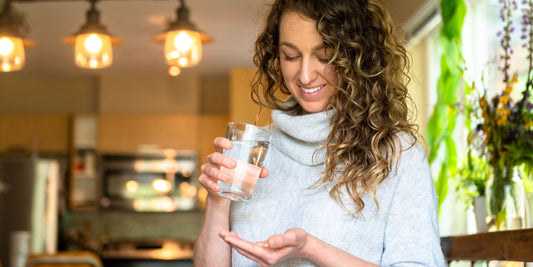When planning to travel internationally, there are tonnes of exciting things to think about – where will you stay, what sights will you see, where will you go to eat?
But there is one thing to consider that isn’t so fun, and if not planned for, it could mean you have very different memories than what you were expecting - traveller’s diarrhoea (TD). Whilst this nasty travel companion is more likely to occur in particular destinations, it can happen in unexpected places too, so it is far better to be prepared than not.
Protecting the integrity of your gut can go a long way towards preventing TD. Probiotics are a simple and convenient way to do this, but it is important to choose a probiotic strain that is well researched across multiple studies to help with TD, as not every probiotic is suitable. Saccharomyces cerevisiae (boulardii), or SB for short, is a probiotic yeast that has demonstrated the benefit of decreasing the risk of TD. It also has the added benefit of decreasing the duration of diarrhoea, should an infection occur.1
Checking the following list can minimise your chances of contracting traveller’s diarrhoea and understand how to best help yourself recover sooner should the need arise.
Before you travel2
- Do your research - Knowing what infectious illnesses are most likely to occur in your destination is a great start. You are particularly looking out for food borne (such as salmonella) and water borne (such as E. Colli) illness.
- Pack accordingly – Hand sanitiser and antibacterial wipes need not take up too much space and could stop your holiday from becoming memorable for the wrong reasons.
- Prepare your gut – Taking 5 billion CFU of SB per day for at least 5 days before you travel helps to set you up for success.3 Try Inner Health Travel Bug next time you’re holidaying.
Whilst travelling4
- Practice good hand hygiene – Wash your hands with soap and water every time before eating. Carry and use hand sanitiser in destinations where water may be contaminated, or unavailable.
- Be mindful of your meals – Whilst street vendors are a great way to experience local cuisine, they may not have as stringent safety standards as an all-inclusive resort - eating steaming hot food, straight off the pan/grill will help minimise your risk of eating contaminated food.
- Support the gut - Continue to take 5 billion CFU/day of your SB probiotic to lower your TD risk1
Should you experience diarrhoea symptoms, don’t panic!4
- Make yourself as comfortable as possible at the place where you are staying – and stay put for a few days. Your body needs rest, plenty of fluids and a bathroom.
- Take an anti-diarrhoea medication such as a loperamide-based medicine.
- Increase your dose of SB to 20 billion CFU/day until symptoms ease, then decrease back to 5 billion CFU/day until you return home.5
Inner Health Travel Bug contains 5 billion CFU of SB probiotics per capsule and is packaged in a convenient, shelf-stable bottle, making it travel-friendly. One bottle contains enough probiotics for 3 weeks travel, including the 5 days pre-travel dose, and is suitable for adults and children from age 3.
Safe travels!
References
- McFarland LV, Goh S. Travel Med Infect Di. 2019;27:11-19. doi:10.1016/j.tmaid.2018.09.007
- Infectious diseases. Australian Department of Foreign Affairs and Trade. Updated May 30, 2023. Accessed September 13, 2023. https://www.smartraveller.gov.au/before-you-go/health/diseases
- Kollaritsch HH, Wiedermann G. Prevention of Traveler’s Diarrhea: A Double-Blind Randomized Trial with Saccharomyces cerevisiae Hansen CBS 5926. In: Steffen R, Lobel H, Haworth J et al (eds) Travel Medicine. Springer. 1989. https://doi.org/10.1007/978-3-642-73772-5_69
- Food safety while travelling. Better Health Channel. Updated April 20, 2022. Accessed September 13, 2023. https://www.betterhealth.vic.gov.au/health/healthyliving/Food-safety-while-travelling
- Kollaritsch H et al. Fortschr Med. 1993;111(9):152-156.




